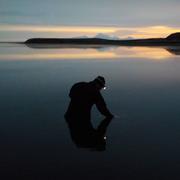Data and Tools
Science Datasets
Science Datasets
The data collected and the techniques used by USGS scientists should conform to or reference national and international standards and protocols if they exist and when they are relevant and appropriate. For datasets of a given type, and if national or international metadata standards exist, the data are indexed with metadata that facilitates access and integration.
Split-beam Echo Sounder and Navigation Data Collected Using a Simrad EK80 Wide Band Tranceiver and ES38-10 Transducer During the Mid-Atlantic Resource Imaging Experiment (MATRIX), USGS Field Activity 2018-002-FA
In summer 2018, the U.S. Geological Survey partnered with the U.S Department of Energy and the Bureau of Ocean Energy Management to conduct the Mid-Atlantic Resources Imaging Experiment (MATRIX) as part of the U.S. Geological Survey Gas Hydrates Project.
Geomorphic and ecological effects of Hurricanes Katrina and Rita on coastal Louisiana marsh communities
Hurricanes Katrina and Rita made landfall in 2005, subjecting the coastal marsh communities of Louisiana to various degrees of exposure. We collected data after the storms at 30 sites within fresh (12), brackish/intermediate (12), and saline (6) marshes to document the effects of saltwater storm surge and sedimentation on marsh community dynamics.
Counts and Abdominal Profile Indices of Wintering Emperor Geese (Anser canagicus) at Three Islands in Alaska, 2003 and 2015-2017
These data are in two tables related to surveys conducted on wintering Emperor Geese in Alaska. Surveys counting the number of wintering Emperor Geese were conducted on Shemya Island in 2003 and 2016, and on Adak Island in 2016-2017.
Benthos Sample Data from Izembek and Nelson Lagoons, Alaska, 1998
This data set contains a single table of descriptions of benthic samples collected in 1998 at Nelson and Izembek lagoons, Alaska. This includes: the weight of the sample, the species or species group of benthic animals (also vegetation) and their number, size and weight, and the amount of sand and gravel.
Repeat microgravity data from Albuquerque and Bernalillo County, New Mexico, 2016-2019 (ver. 2.0, September 2020)
This dataset represents the network-adjusted results of relative- and absolute-gravity surveys. Relative-gravity surveys were carried out using a Zero Length Spring, Inc. Burris relative-gravity meter. The effect of solid Earth tides and ocean loading were removed from the data.
Datasets for assessing the impact of drought on arsenic exposure from private domestic wells in the conterminous United States
Documented in this data release are data used to model and map the probability of arsenic being greater than 10 micrograms per liter in private domestic wells throughout the conterminous United States during drought conditions (Lombard and others, 2020).
Ar isotope data for volcanic rocks from the northern Harrat Rahat volcanic field and surrounding area, Kingdom of Saudi Arabia
"The data are the results of mass spectrometer experiments to measure 40Ar/39Ar ages of groundmass and mineral separates from volcanic rocks in northern Harrat Rahat, Kingdom of Saudi Arabia. The data were collected using a MAP216 noble gas mass spectrometer at the USGS facility in Menlo Park, Calif.
Data for Beach Mice Bayesian Network Model
This U.S. Geological Survey (USGS) data release represents tabular and geospatial data for the Biological Objectives for the Gulf Coast Projects Beach Mice Bayesian network model. The data release was produced in compliance with 'open data' requirements as a way to make the scientific products associated with USGS research efforts and publications available to the public.
Data for the development of a new method for dynamically estimating exposure time for turbulent flow measurements
The mission of the U.S. Geological Survey (USGS) involves providing reliable, impartial, and timely information that is needed to understand the Nation?s water resource. New techniques that aid in achieving this mission are important, especially those that allow USGS to do so more accurately or cost-effectively.
Copper River and Knik River Bathymetric Surveys at Select Alaska Highway Bridges near Flag Point and Butte, Alaska, 2020
In 2020, the Alaska Science Center and the Idaho Water Science Center conducted bathymetric surveys at three highway bridge structures. The bridge structures (NBI 331 and 1187) at Flag Point near Cordova, AK are located on Alaska State Route 10 (commonly referred to as the Copper River Highway). Bridge structure NBI 539 on the Knik River is located on the Old Glenn Hwy near Butte, AK.
Nimz Ranch Tie Channel Velocity Mapping and Discharge Measurements, Kootenai River near Bonners Ferry, ID
Discharge measurements and velocity mapping surveys were completed at select tie channels located at Nimz Ranch, on the main-stem Kootenai River. Tie channels convey water and sediments between the main river channel and river floodplain waterbodies. The velocity mapping surveys are used to document how the tie channels interact with the main-stem Kootenai River.
Cyanobacterial toxin effects on inflammatory response of human toll-like receptors (TLRs)
Various stressors including temperature, environmental chemicals and toxins can have profound impacts on immunity to pathogens. It is believed that increased eutrophication near rivers and lakes coupled with climate change are predicted to lead to increased algal blooms. Currently, the effects of cyanobacterial toxins on disease resistance in mammals is a largely unexplored area of research....




